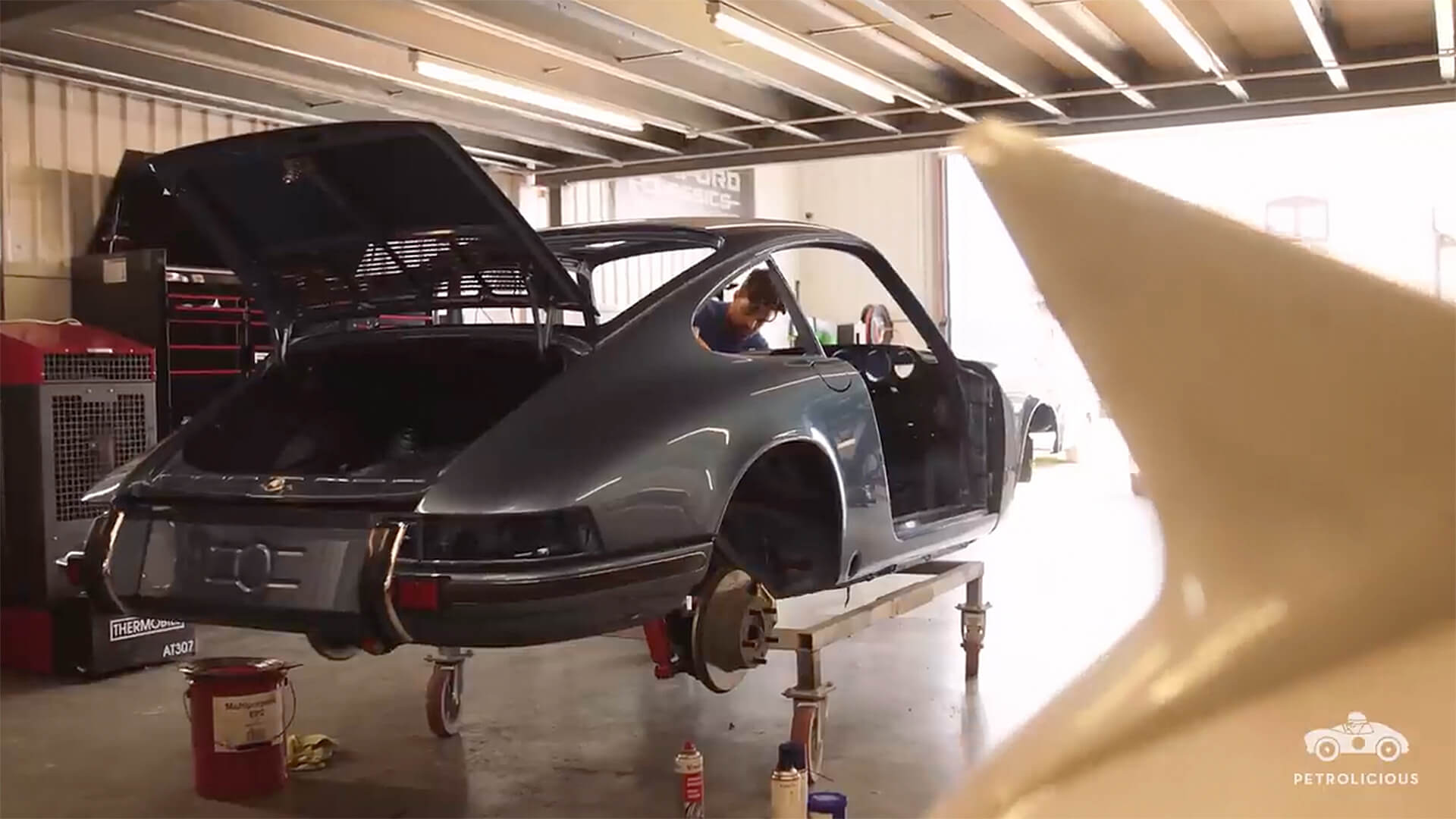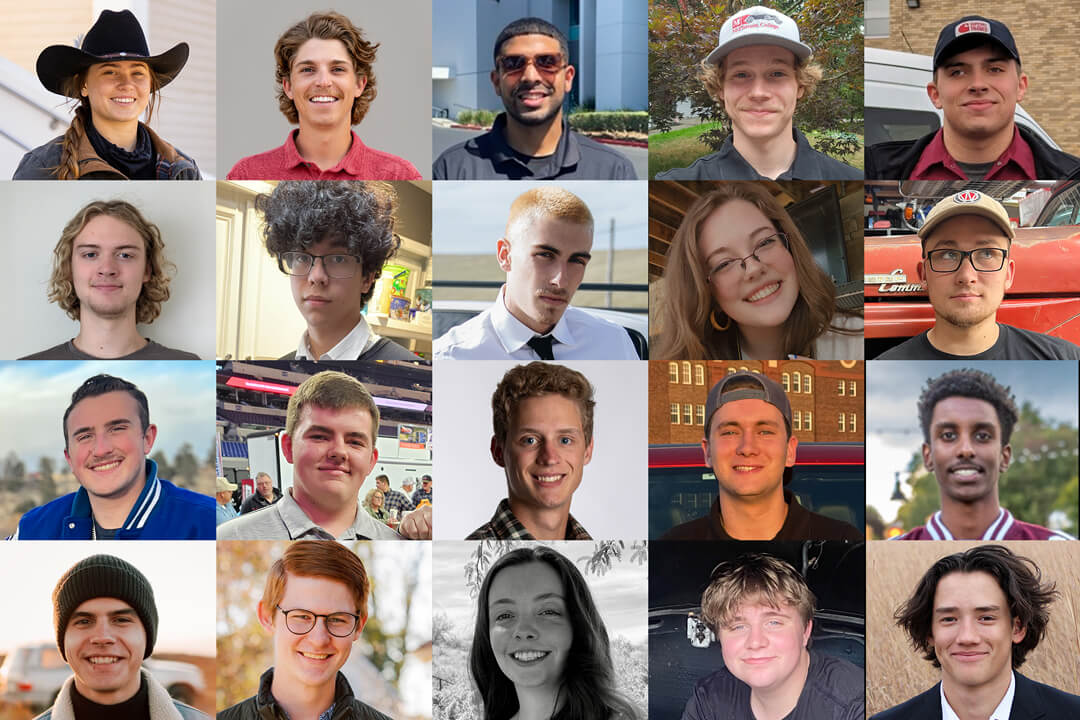Restoring a Greyhound Bus: A Love Story
John Webb of Emery & Webb Insurance appreciates the need for more qualified restoration specialists and supports the Piston Foundation’s mission of funding skilled trade education for the collector car craftspeople of tomorrow.
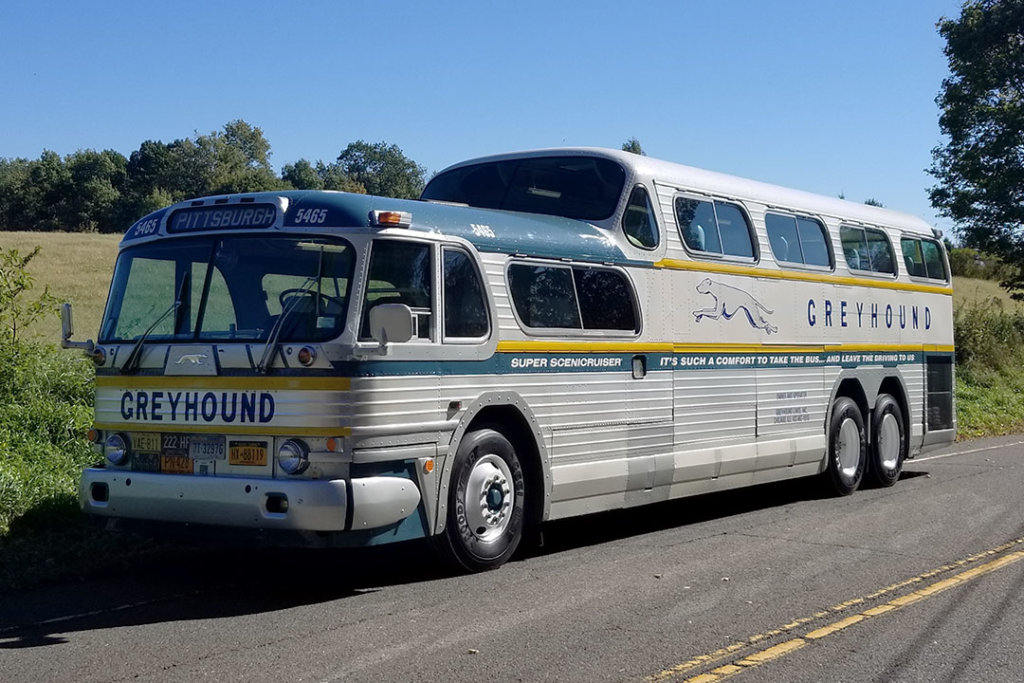
By Robert Minnick
October 22, 2021
Finding the right person to restore his 1954 GMC PD-4501 Greyhound Scenicruiser bus took longer than the actual restoration. Seventeen years passed between the time he found the bus and the day it won the Antique Automobile Club of America’s National Bus Award in 2017 and its first junior award in 2017 and senior in 2018 at the AACA Hershey Fall meets.
John and the restoration specialist he needed, Matt Pfahl, share the story and some thoughts on the Foundation’s work.
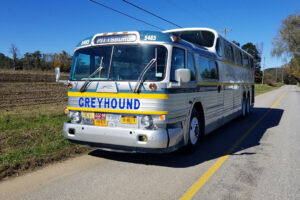
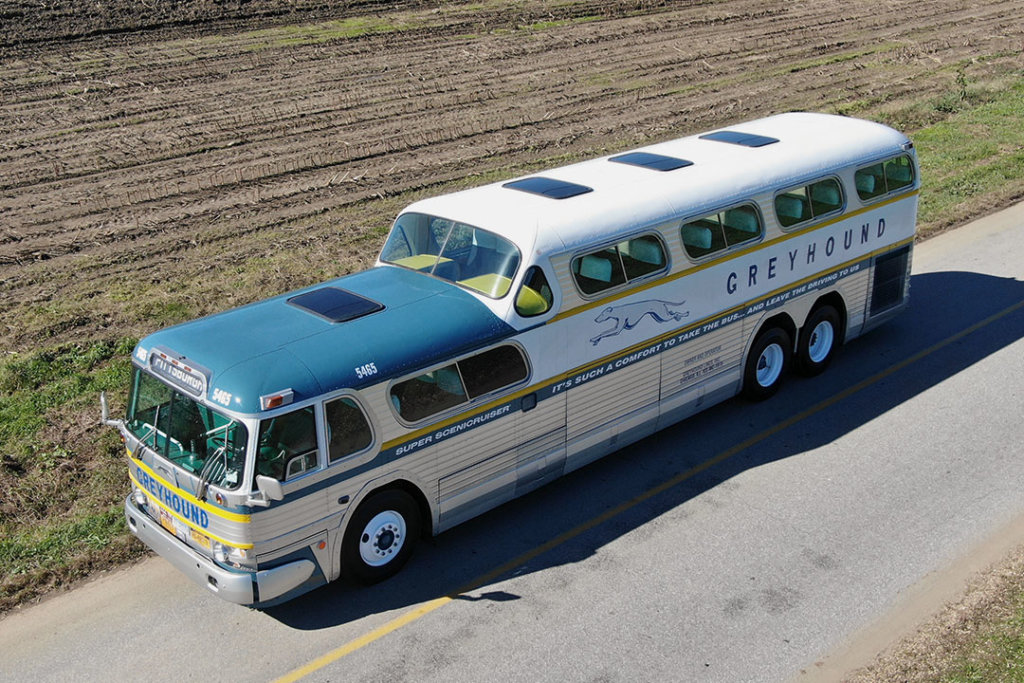
What is the story of finding the right automotive restoration specialist?
John: I spent a decade frustrated by broken promises and false starts, before I found Matt Pfahl of Pfahl’s Mack & Antique Truck Restorations in Bethlehem, Conn.
Matt: Most people buy a bus to convert it to a motor home. First, they open the windows, which are hinged at the top for emergency egress, and toss out the seats and luggage racks. Next, because the seats are elevated, the typical, ambitious owner cuts into the floor to make it even and maximize headroom. That’s when the unibody construction becomes structurally unstable. Usually, the empty bus is put out to pasture to rot.
When we picked up the Scenicruiser, I knew it wasn’t going to roll onto the trailer without wheels and axles. We spent three hours with the forklift and other tools to it onto dollies and then onto the trailer. Another five hours was spent loading pallets of boxes packed with thousands of pieces of trim and molding.
John: After everything was loaded, Matt called to say, “I’m finished.” More than one person had started the job and left it. I thought I had lost my last chance at getting the bus done.
Matt: I laughed when I told him I meant I was done with the loading and we were ready to roll home. He was so happy that the restoration was actually going to start, he told me to take my guys to dinner and celebrate.
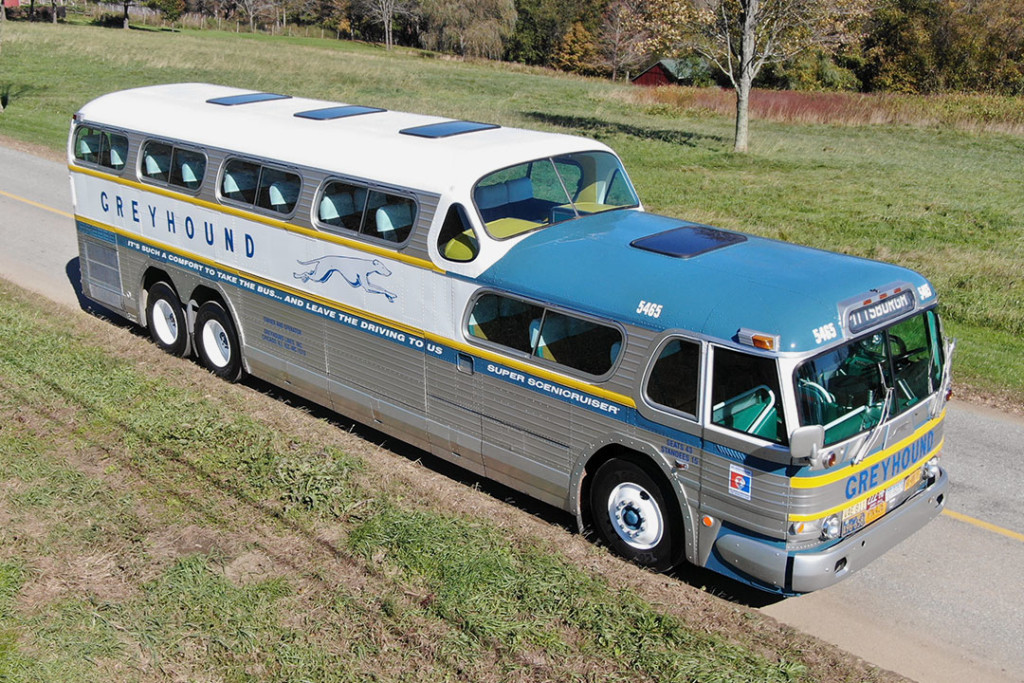
John, why would you even take on a project that would be such a challenging automotive restoration project?
John: I fell in love with buses when I was five and my grandmother took me into New York City on a New Jersey Transit bus. I couldn’t get over how the driver was able to keep this big machine on the road. I was fascinated.
Years later, when my family moved, I’d ride buses cross-state to visit my grandparents. My parents would put me in the front seat and ask the driver to keep an eye on me. That was my first introduction to Greyhound and it was all I needed.
When I was 10, my grandmother urged my grandfather to buy me a share of Greyhound stock. I would read the annual reports to find out what the company was doing and its plans for the future. I still have those reports.
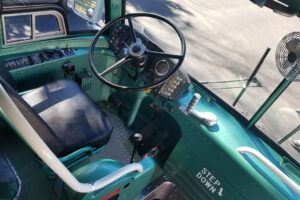
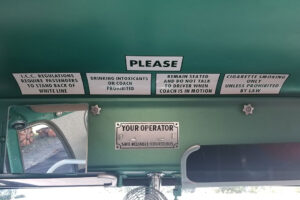
Matt, what were some of the problems you had to resolve to get this restoration project done?
The team — Tom Davis, Jesse Dunlap, Tom Gereg, Bob Grandpre, Jr., Bill Lockwood, and Keith Wilcox — first restored the floor and added new sheet metal to the exterior using 45,000 rivets.
All 45 seats—43 passenger, one driver, and one toilet—were long gone. Only 1,001 buses were originally produced for this model so finding seat replacements wasn’t easy. The luggage racks came from a donor bus.
A Mexican fabricator needed three years to recreate the 19 pieces of curved glass and another year to replace pieces broken in transit. The flat glass was a little quicker to get, manufactured locally by Plymouth Glass, Thomaston, Connecticut, and other components came from Arizona, Illinois, Kentucky, and New York.
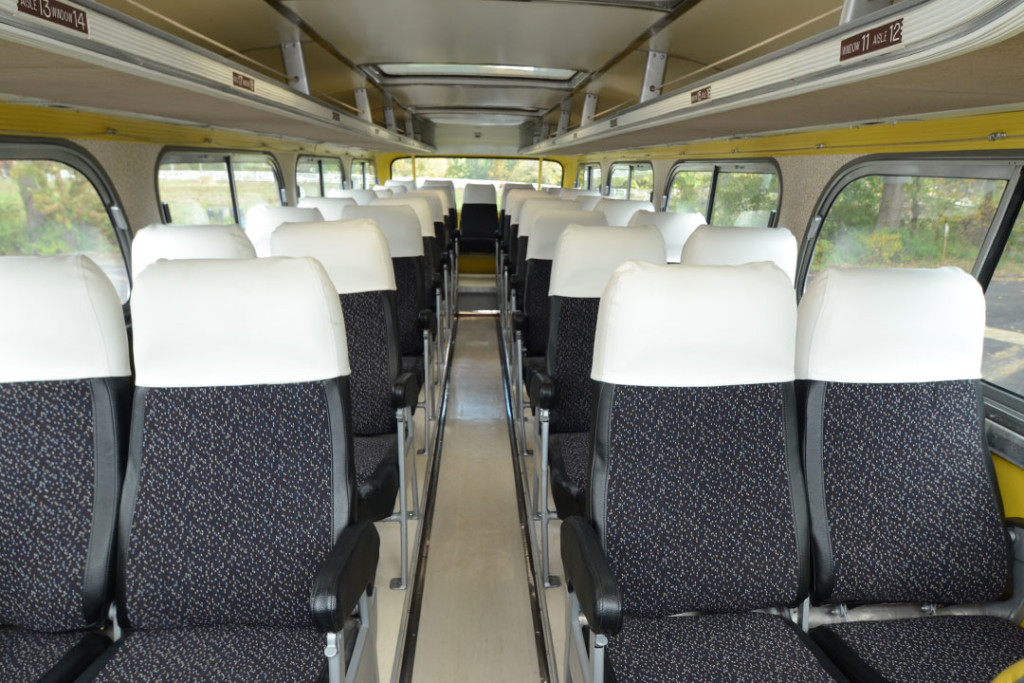
What would you say about the need to support future restoration specialists?
John: This is a life-long dream come true. I never thought I’d own a Scenicruiser and now I’m in disbelief. When we were five years into the project, I told Matt I didn’t know if I could keep going. But then, I figured I’d kick myself if I got as far as we did and quit. I’m glad I didn’t give up and I would say the same to anyone going into the field of automotive restoration. Don’t give up.
And anyone who appreciates what people like Matt and his team can do should support the Foundation’s work.
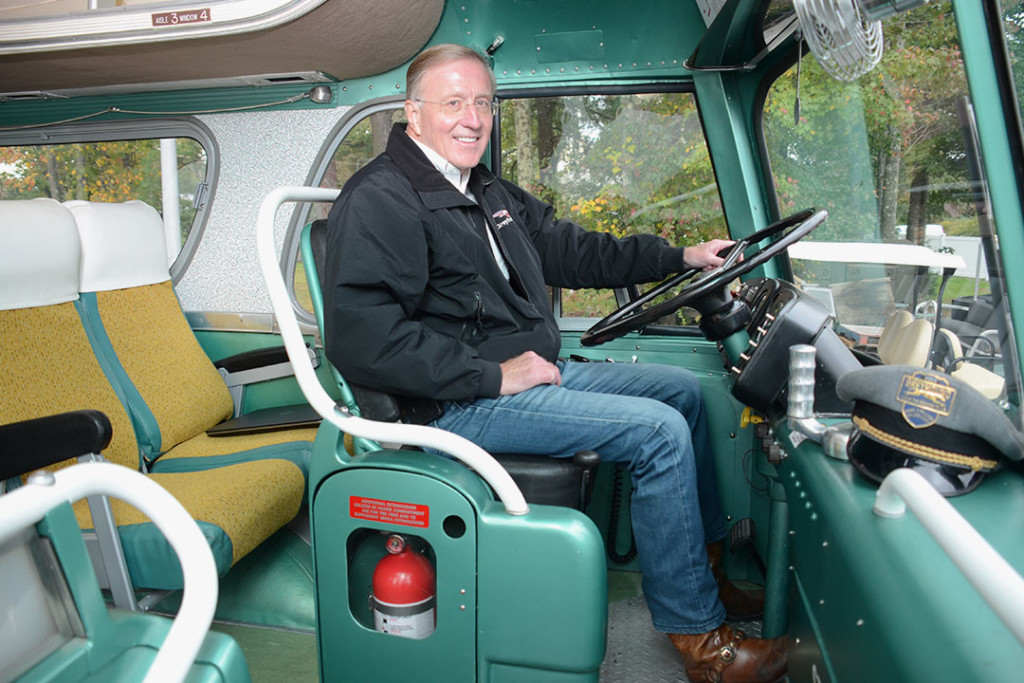
Donate
Today
Support skilled trade education for future auto restoration technicians.
Campaigns
Give to What You Love
Make a gift that helps the next generation access the education and training they need to begin a career as a classic car technician. Gifts of any size are appreciated and will be used to fund our scholarship and apprenticeship programs.
Sponsor a Piston Scholar
Piston Foundation scholarships are awarded to aspiring technicians to help them begin an auto restoration career. Give to the car culture you love. 100% goes to fund scholarships.
Cars for Piston Scholars
Turn your collector car into education and hands-on training for aspiring collector car technicians. Your car can change lives. 100% goes to fund scholarships.
Give to What You Love
Make a gift that helps the next generation access the education and training they need to begin a career as a classic car technician. Gifts of any size are appreciated and will be used to fund our scholarship and apprenticeship programs.
Sponsor a Piston Scholar
Piston Foundation scholarships are awarded to aspiring technicians to help them begin an auto restoration career. Give to the car culture you love. 100% goes to fund scholarships.
Cars for Piston Scholars
Turn your collector car into education and hands-on training for aspiring collector car technicians. Your car can change lives. 100% goes to fund scholarships.
Subscribe
Sign up for our monthly email with stories, updates, and volunteer opportunities.


